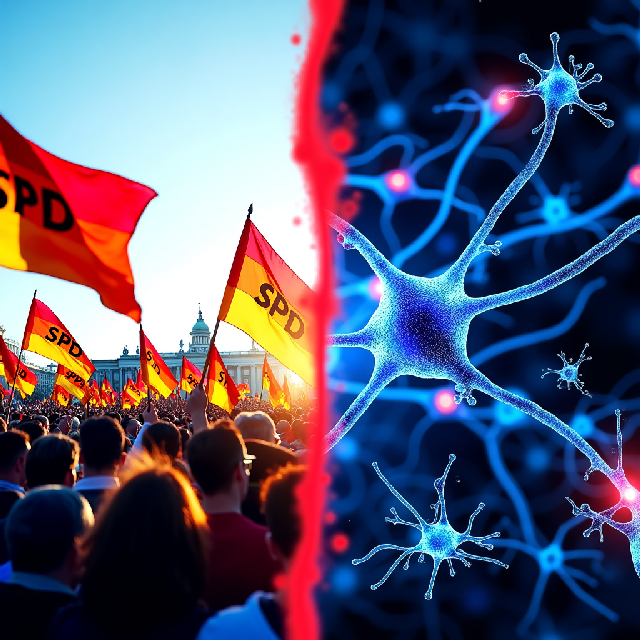A Dual Exploration of SPD: Understanding Two Critical Concepts
The acronym “SPD” represents two distinctly different yet significant concepts: one in the realm of politics and the other in the field of neuroscience. The Social Democratic Party of Germany (SPD) and Sensory Processing Disorder (SPD) may share a common abbreviation, but they impact society in vastly different ways. This article delves into both meanings, exploring their historical contexts, societal impacts, and contemporary relevance.
1. The Social Democratic Party of Germany (SPD)
Historical Context
The Social Democratic Party of Germany (Sozialdemokratische Partei Deutschlands) is one of the oldest and most influential political parties in Germany, founded in 1875. Rooted in Marxism, the SPD emerged from the labor movements of the 19th century, with the goal of advocating for workers’ rights and social justice.
Key Historical Events:
- Founding (1863): The ADAV (General German Workers’ Association) was established by Ferdinand Lassalle.
- Unification (1875): The merger of ADAV and SDAP formed the Socialist Workers’ Party of Germany.
- Weimar Republic (1918-1933): The SPD played a central role in shaping post-war governance, with Friedrich Ebert becoming Germany’s first President.
- Nazi Era (1933-1945): The party was banned by the Nazi regime, leading to exile or underground resistance.
- Post-WWII Revival: Re-established as a major political force in West Germany under leaders like Willy Brandt.
Core Values and Policies
The SPD is committed to social democracy, emphasizing income equality, workers’ rights, and social justice. Its policies have shaped modern Germany:
Income Equality:
- Progressive taxation systems to reduce economic disparities.
- Higher minimum wages and robust social safety nets to ensure access to healthcare and education.
Workers’ Rights:
- Establishing labor laws, including a minimum wage and protections against unfair dismissal.
- Supporting strong trade unions and collective bargaining.
Social Justice:
- Addressing systemic inequalities based on race, gender, or socioeconomic status.
- Promoting gender equality in the workplace and expanding access to quality education.
Current Influence
The SPD remains a pivotal force in German politics, currently led by Chancellor Olaf Scholz. Despite challenges such as declining membership and electoral setbacks (e.g., securing only 16% of the vote in the 2025 federal elections), the party continues to advocate for progressive policies and coalition governance.
2. Sensory Processing Disorder (SPD)
Definition and Symptoms
Sensory Processing Disorder (SPD) is a neurological condition characterized by difficulties in processing sensory information from the environment. It affects how individuals detect, modulate, interpret, and respond to stimuli.
Common Symptoms:
- Hypersensitivity: Overreacting to sounds, lights, textures, or smells.
- Hyposensitivity: Under-reacting to stimuli, such as not noticing pain or extreme temperatures.
- Sensory Seeking Behaviors: Craving intense sensory experiences, like spinning or deep pressure.
- Motor Challenges: Difficulty with balance, coordination, and fine motor skills.
The Link Between SPD and Autism
While SPD is often associated with autism spectrum disorder (ASD), it can also occur independently. Research indicates that 90% of individuals with ASD experience SPD, but the two conditions are distinct:
- Autism primarily affects social communication and interaction.
- SPD focuses on sensory processing and motor responses.
Neurological Basis
Studies using neuroimaging techniques like fMRI have identified structural differences in brain connectivity, particularly in areas responsible for sensory integration. These findings suggest that SPD has a biological basis, distinguishing it from other disorders.
Impact on Daily Functioning
SPD can significantly affect daily life:
- Routine Tasks: Challenges with getting dressed or eating.
- Social Interactions: Sensory overload leading to anxiety or avoidance.
- Emotional Regulation: Struggles with managing stress and emotions due to sensory challenges.
Diagnosis and Treatment
The diagnostic process for SPD is not straightforward due to the lack of standardized criteria. While SPD is not officially recognized in the DSM-5, it is often diagnosed by occupational therapists using clinical observations and assessments.
Non-Pharmacological Treatments:
- Occupational Therapy (OT): Techniques include balance treatments, movement therapy, and exposure to sensory input.
- Sensory Integration Therapy: Methods such as brushing, joint compression, and swing therapy to improve sensory processing.
- Lifestyle Adjustments: Creating sensory-friendly environments and incorporating physical activity.
Comparing the Two SPDs: Similarities and Differences
Societal Impact
| Dimension | Political SPD (Social Democratic Party) | Neurological SPD (Sensory Processing Disorder) |
|---|---|---|
| Societal Impact | Shapes policies on healthcare, education, and workers’ rights. | Affects individuals’ daily lives, impacting mental health, education, and workplace environments. |
| Public Awareness | High recognition due to its significant role in German politics. | Lower recognition compared to other conditions like autism. |
Challenges
- Political SPD: Faces declining membership, ideological shifts, and competition from far-right parties like AfD.
- Neurological SPD: Struggles with lack of awareness, misdiagnosis, and debates over its recognition as a standalone disorder.
Conclusion
The term “SPD” encapsulates two vastly different yet equally important concepts: one shaping political landscapes and the other affecting individual sensory experiences. By understanding both contexts, we gain insight into societal structures and human health. This dual exploration highlights the complexity and diversity of the term, emphasizing its relevance in different domains.
#SPD #GermanHistory #SocialDemocracy #SensoryProcessingDisorder

The comment asks if the article explores any overlap between the SPD’s social welfare policies and support for individuals with Sensory Processing Disorder (SPD), considering both influence societal well-being.
The article doesn’t connect SPD’s social welfare policies with support for those with Sensory Processing Disorder (SPD), which is an interesting link since both impact society in different ways.
The article highlights how SPDs impact society. Exploring how political policies can support those with SPD could offer practical solutions for creating inclusive environments. A follow-up piece might provide deeper insights into how policies can benefit both individuals and society.
Does the article explore any overlap between SPD’s social welfare focus and strategies for Sensory Processing Disorder? This could provide insights into how policy might address neurological conditions.